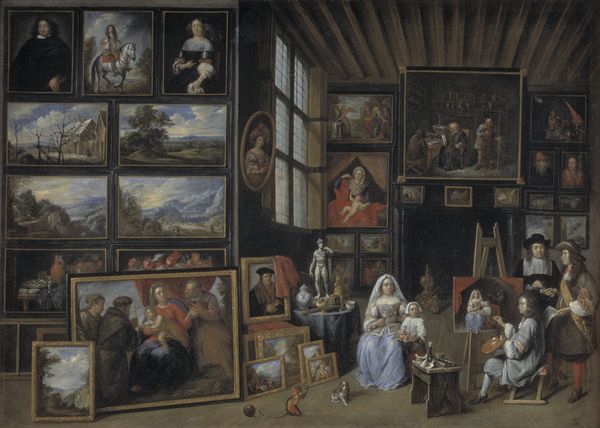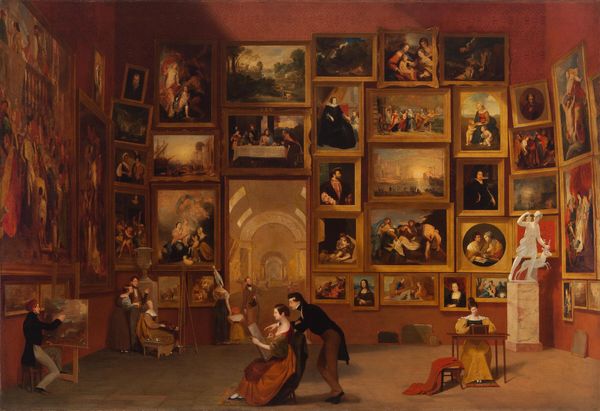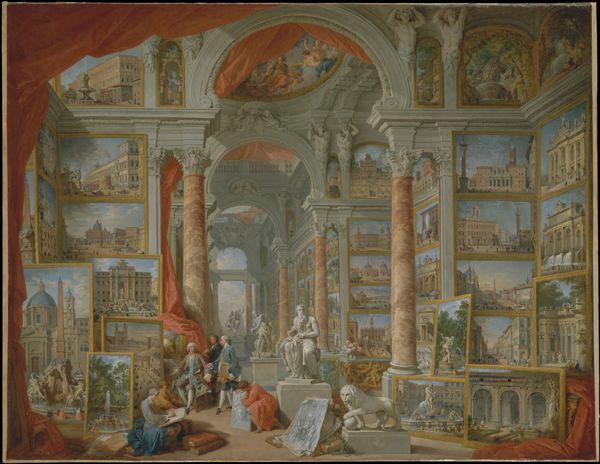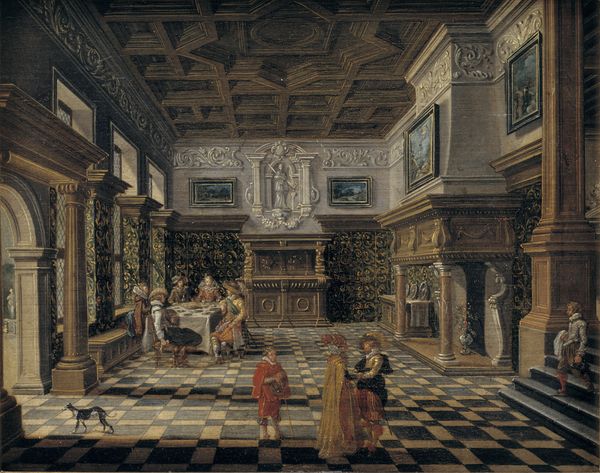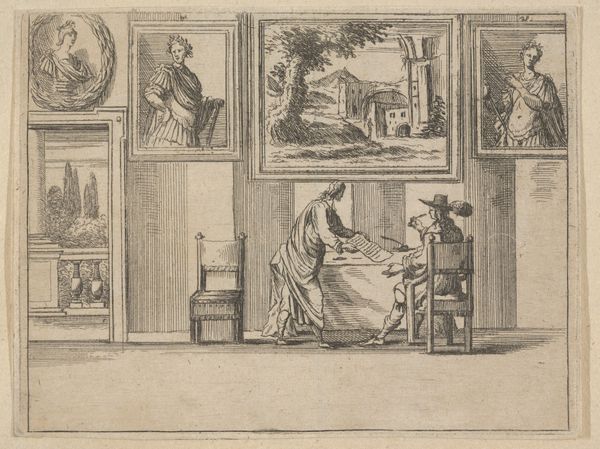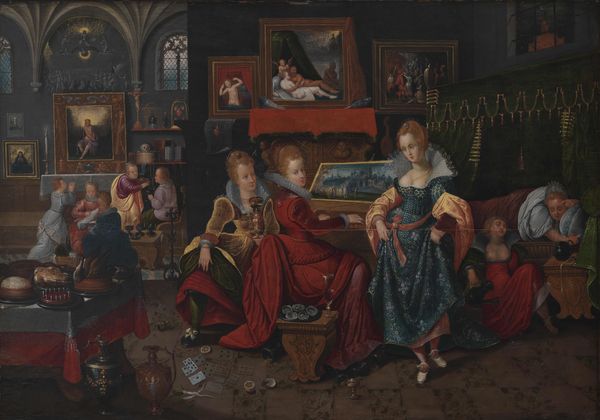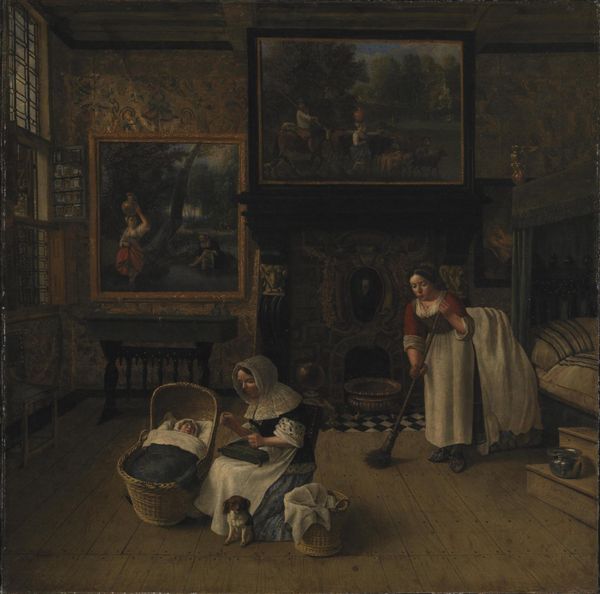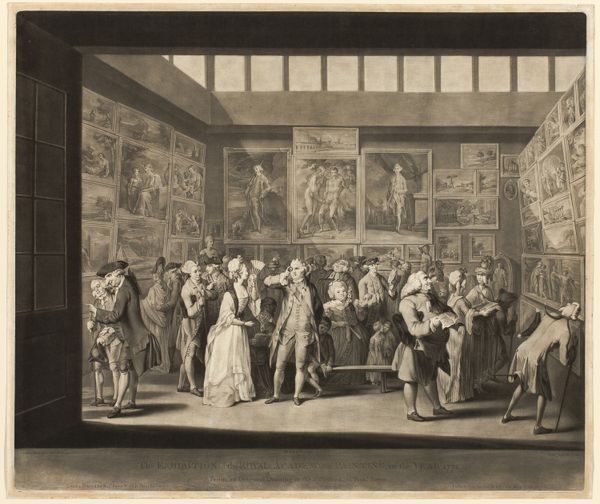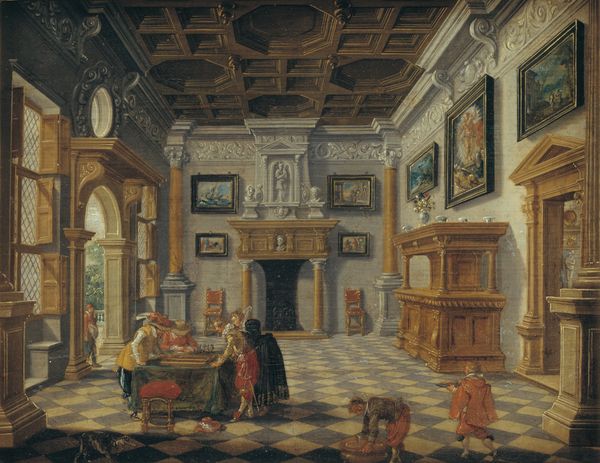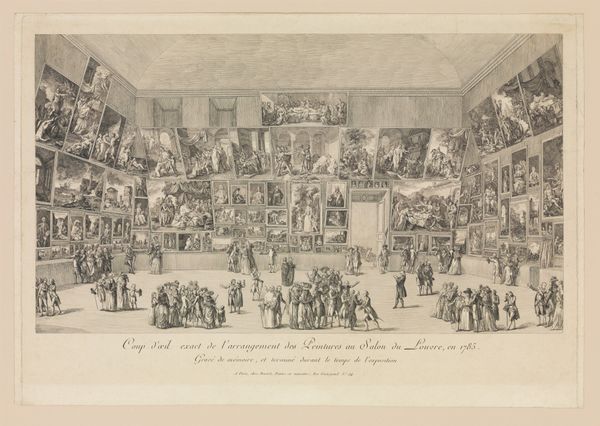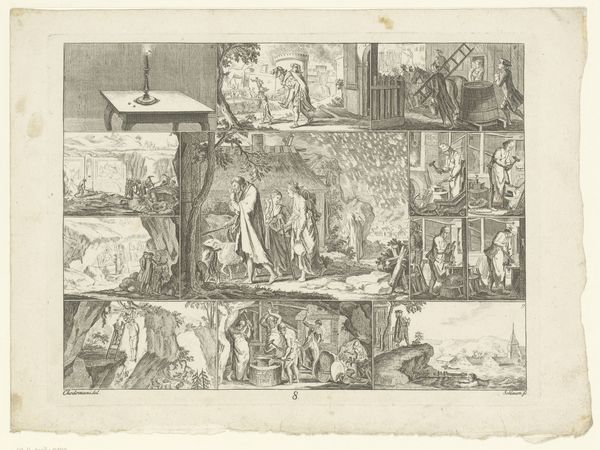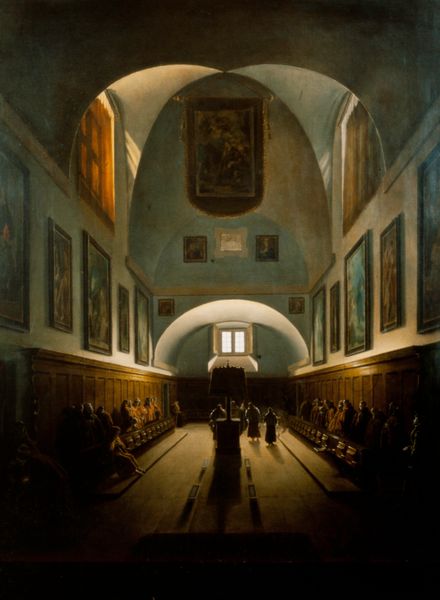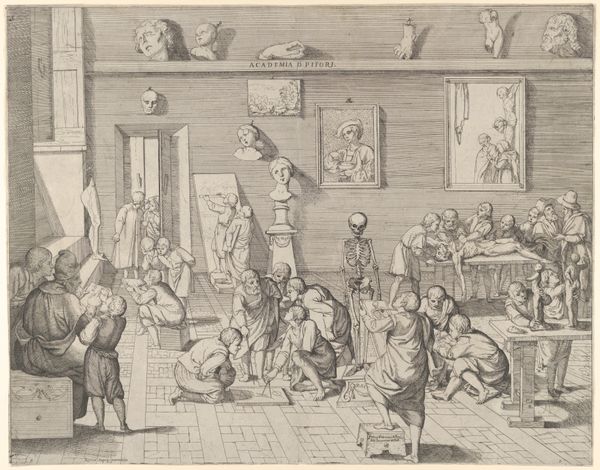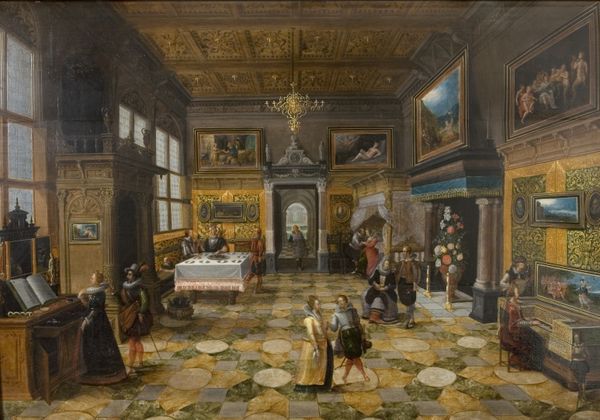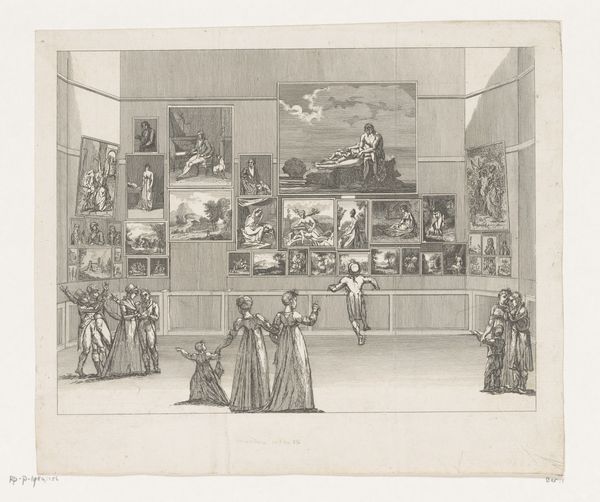
painting, oil-paint
#
figurative
#
narrative-art
#
baroque
#
painting
#
oil-paint
#
figuration
#
oil painting
#
genre-painting
#
history-painting
#
academic-art
Copyright: Public Domain: Artvee
Curator: Walking in here, it's like stepping into a different dimension! All these pictures… it's almost overwhelming. Editor: Absolutely. Teniers the Younger presents us with, well, a gallery within a gallery, entitled "The Picture Gallery of Archduke Leopold William." Look at the density of it all—portraits stacked upon landscapes, histories jostling for attention! It's a baroque feast for the eyes. I immediately fixate on the material aspect of quantity in collection spaces, it's always too much! Curator: Isn’t it mad? I mean, imagine being in a room with all your faces staring down at you from the walls… all the portraits watching and judging, like characters waiting for their plot. And some of these canvasses aren’t framed! Resting haphazardly against the wall like the exhibition is moving… it speaks to art in transit, but what's that movement meant to express? Editor: Precisely! These galleries were places of not just consumption, but transaction: of cultural, political, and also material capital. These images stand alone only until they reach this gallery. Here they're part of the Archduke's assemblage and reflection. Do you also think this has anything to do with that movement you're expressing, what’s in fashion and out? These art objects may always have this fate. The people are more constant, after all. Curator: Yes. And consider the layers of artifice. The paintings depict people, places, and stories… that now exist solely through pigments smeared onto a canvas! It is a hall of fame with no real people present; their existence has evaporated to become something… untouchable. A display! Editor: Think about it! The skilled labor involved in creating these pictures; the pigments ground, the canvases woven and stretched. The value here isn’t inherent; it is fabricated through process, trade, and of course, aristocratic whim. The artist as artisan, the artist as entrepreneur… he knows who is employing him, right? Is that too cold to look at it that way? Curator: I disagree. Teniers isn't just documenting, he’s narrating the theater of display itself, framing the very act of seeing and the story of what happened! We don't only understand that material is always a social construct in our lives, we can start to understand what they are! So much intention from creator and consumer! That's lovely, but very deep if we believe so strongly, maybe. Editor: An abundance. And maybe that abundance, materially speaking, also allows the art world to function—for a select few of course, since someone, always, paid to produce what you feel about it, don’t you think? Well, great conversation about a beautiful piece; something that keeps being built. Curator: Indeed. It's like the paintings whisper to one another, a silent, crowded conversation echoing through time. It will never shut up if the piece continues its existence through dialogues!
Comments
No comments
Be the first to comment and join the conversation on the ultimate creative platform.
